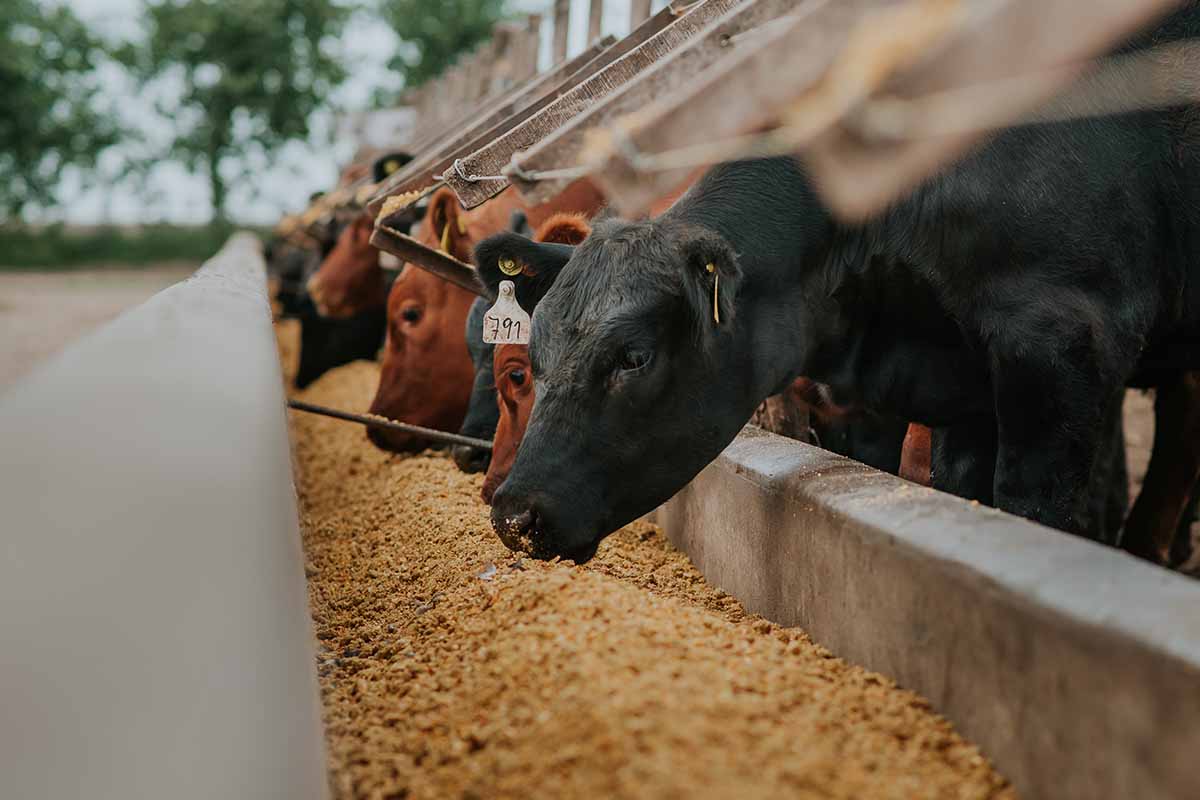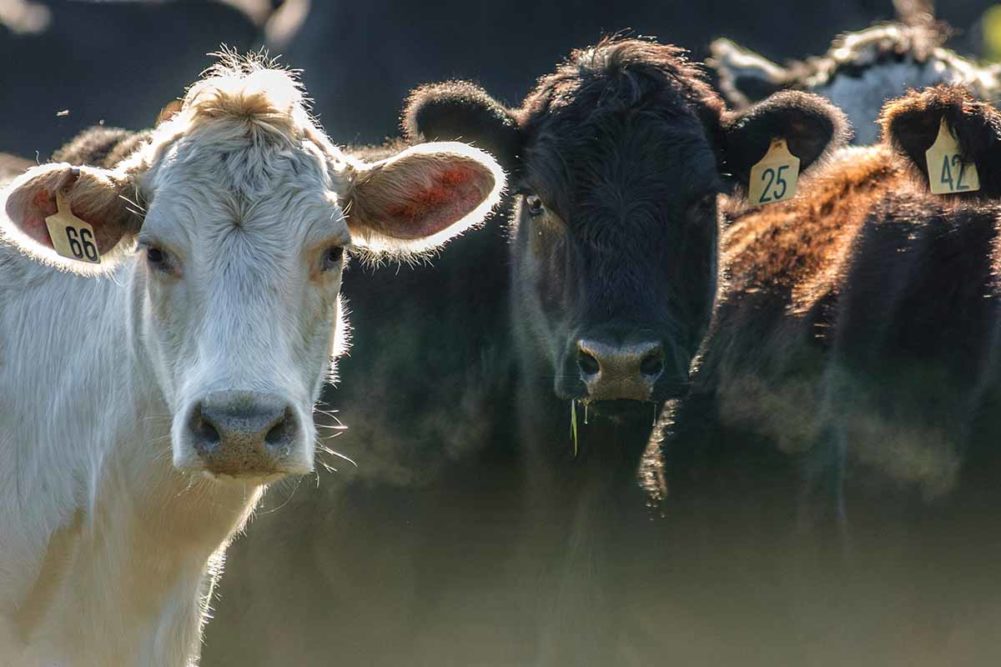The most recent National Beef Quality Audit, completed in 2022, marks three decades of the Beef Checkoff-funded program designed to learn more about where the beef industry stands on a variety of quality parameters. These audits, first initiated in 1991, are comprised of three phases:
- Phase I includes interviews/surveys with producers, packers, purveyors, retailers, restaurateurs and others to identify their concerns about the quality of beef;
- Phase II involves intensive in-plant surveys where live animal, by-products, and carcass data are obtained along with instrument grading information; and
- Phase III consists of a strategy workshop where discussions are held with industry leaders and stakeholders about where the US beef industry should be heading.
Multiple university, government, and industry entities are involved in various aspects of the audits, and the information and recommendations gathered across the years have influenced educational and research activities.
The Beef Quality Assurance program of the National Cattlemen’s Beef Association coordinates these audits, thereby ensuring widespread industry involvement and dissemination of findings to key constituents. One of the primary drivers for the National Beef Quality Audit started with a presentation by Chuck Lambert, PhD, of the then National Cattlemen’s Association at the International Stockmen’s School titled, “Lost Opportunities in Beef Production.” An economist, Lambert documented approximately $12 billion in losses to the beef industry related to various inefficiencies and practices. This approach to evaluating the impact of missing the mark on so many areas of beef production intrigued the primary investigators of the first National Beef Quality Audit, and they strived to capture how quality and value were intertwined. The first audit focused on fed steers and heifers, but recent audits now include market cows and bulls, and the collaborative work is repeated every five or six years to measure progress and identify new trends and challenges.
Phase I
The most recent findings show that food safety was the most important factor in beef purchasing decisions and was frequently described as “everything” and “a way of business.” When asked what the greatest strength was, “eating quality of US beef” came to the forefront. Surprisingly, for the market cow and bull sector, the greatest concern identified in all market sectors was foreign material contamination with “bird shot” the most reported problem. For both fed steer and heifer and market cow and bull channels, “environmental concerns” were among the commonly identified major threats to the industry. Finally, both sustainability and traceability were mentioned as important goals and issues for the beef industry.
Phase II
Transportation times and distances to the plant along with space available on the trailers have been assessed in recent audits. As one might expect, fed steer and heifers travel shorter times and distances to plants than do the market cows and bulls where production is more widespread. Space available for the cattle on trailers during transport appears to meet the recommended requirements. When mobility coming off the trailers is evaluated to see how easy cattle move, the overwhelming majority have no issues.
Most cattle have one or more identification methods, and there has been an increase in the use of electronic ear tags. Cattle hide colors/patterns show an increasing number of black-hided (62.3%) and Holstein (12.3%) in the fed steer and heifer population. From a branding standpoint, 70.5% of the hides had no brands, and 22.4% had brands in the butt region.
 Source: ©LUIS - STOCK.ADOBE.COM
Source: ©LUIS - STOCK.ADOBE.COMHide-off carcasses and by-products were evaluated on the harvest floor for multiple traits. One of concern was the increase in the number of carcass bruises compared to past audits. Interestingly, many of these were along the topline of the carcass indicating that with increasing cattle sizes and weights, loading/unloading cattle in trailers and chutes that were designed for smaller, lighter cattle may be presenting challenges. Offal condemnations continue to be of interest, and for livers, there has been an increase in those with abscesses at 17.5% in the recent audit compared to averages in the mid-13% in earlier audits.
The USDA quality grade distribution was Prime, 7.5%; Choice, 69.2%; Select 16.4%, and other, 6.8%. Carcasses grading USDA Prime and Choice have continued to increase over the past three decades. In the first three audits (1991, 1995, and 2000), Prime was 2.3%, 1.6%, and 2.0%, and Choice was 52.7%, 48.2%, and 49.1%. Most considered the production of Prime simply the tail of the bell-shaped curve for marbling distribution. Today, we see production systems targeting the high-end quality beef market so that Prime and upper Choice grading carcasses are expected, not simply randomly produced. Grid-based marketing programs where premiums are paid for higher grading carcasses certainly have incentivized production of these cattle.
Most in the beef industry know that carcass weights and ribeye sizes have increased significantly over time. Since 1991, carcass weights have increased from 760.7 to 886.2 lbs, and ribeye areas have increased in size from 12.9 to 14.1 square inches. Changes in genetics and management, along with the incentives throughout the marketing channel that reward higher weight throughputs, contribute to these increases.
Since the early 2000s, camera instrument grading has been incorporated in most of the high- and medium-capacity beef packing facilities. We have had the opportunity to obtain data from some of these plants, and for the 2022 audit, we evaluated information from over 4.4 million beef carcasses. Most of these data lined up closely to data collected during the study’s in-plant phase (approximately 9,000 carcasses). One interesting finding is that carcasses that are graded on a Monday after additional days of chilling over the weekend, receiving about a 2-percentage point increase in Prime compared to the other days of the week. There are some production systems where premium-quality cattle may be slaughtered on a Friday allowing carcasses the benefit from the extra chilling time before Monday grading.
Phase III
The highlight of these audits is when people from various sectors of the beef industry come together to see the information from the first two phases and determine how best to proceed with strategies to improve quality and/or reduce problems. One of the areas targeted in earlier audits was the need to increase the grading percentages for the export and restaurant/retail sectors. The targets set many years ago are now being achieved. It is rewarding to see that some of the initiatives and goals set through the National Beef Quality Audits have come to fruition.
Future
As with any program, advances are made, yet challenges exist. The National Beef Quality Audit has served the beef industry well for 30 years, and with any luck, it will continue to help provide benchmarking information necessary for continuous improvements in the future of the beef industry.



